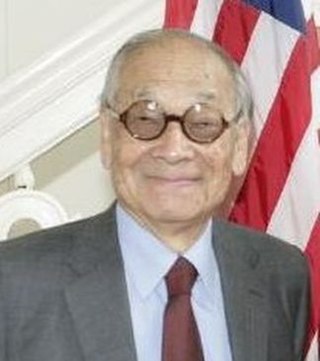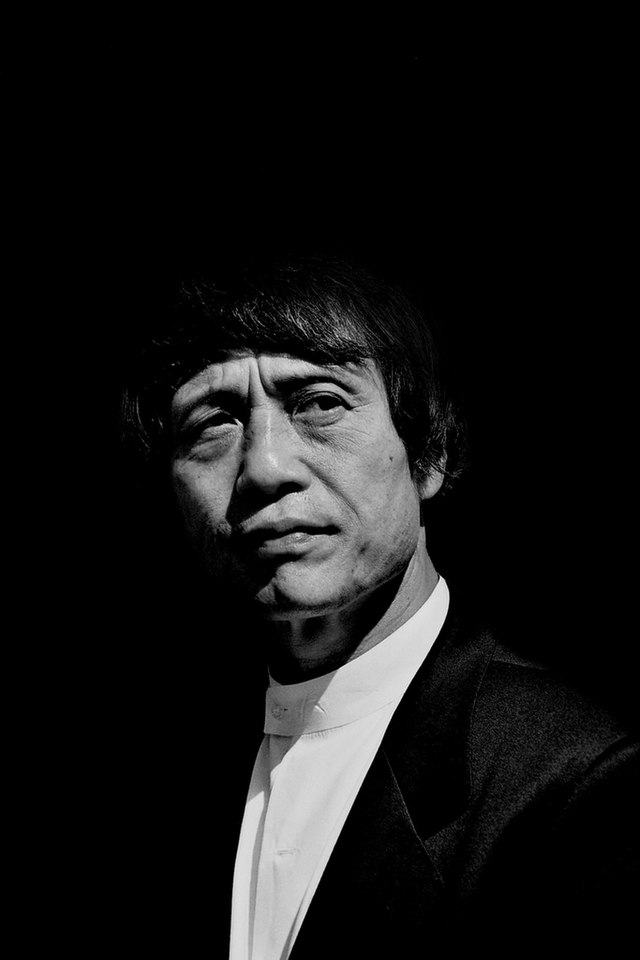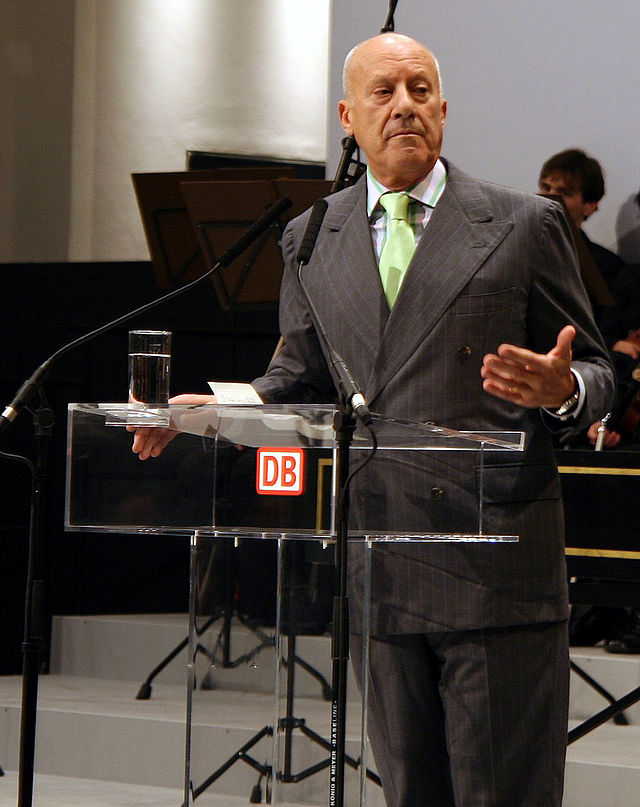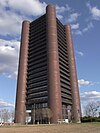Pritzker Architecture Prize
international architecture prize From Wikipedia, the free encyclopedia
The Pritzker Architecture Prize is given each year by the Hyatt Foundation. It is for talented and significant architect who has created great projects throughout his or her life.[1] Jay A. Pritzker and his wife Cindy began the award in 1979. The Pritzker family pays for the prize. It is the top prize in architecture, and it is often called the Nobel Prize of architecture.[2][3] The country, race, religion or political ideas of the architect are not important.[4] Winners get US$100,000 and a certificate.[5] Winners receive a medal. The back of the medal has these words in Latin—firmitas, utilitas, venustas (English: durability, utility, and beauty). The idea comes from the Roman architect Vitruvius.[6] Before 1987, a limited edition Henry Moore sculpture came with the prize money.[5]
| Pritzker Architecture Prize | |
|---|---|
| Awarded for | A career of achievement in the art of architecture |
| Sponsored by | Hyatt Foundation |
| Reward(s) | US$100,000 |
| First awarded | 1979 |
| Last awarded | 2021 |
| Website | www |
Selection
Martha Thorne has been the Executive Director since 2009.[7] The director asks many people, including past winners, academics, critics and others involved in architecture to suggest possible winners.[4] Any licensed architect can also apply for the prize before 1 November every year. In 1988 Gordon Bunshaft applied for the award himself and eventually won it.[8] Five to nine jury members meet early the next year before announcing the winner in spring.[4]
Winners
The first winner was Philip Johnson. The award was "for 50 years of imagination and vitality" shown by the many "museums, theaters, libraries, houses, gardens and corporate structures".[9] The 2004 laureate Zaha Hadid was the first female prize winner.[10] Ryūe Nishizawa became the youngest winner in 2010 at age 44.[11] The most recent winner, in 2019, is Arata Isozaki.
List of prize winners










| Year | Laureate | Nationality | Example work (year completed) | Ceremony location | Ref(s) | ||
|---|---|---|---|---|---|---|---|
| 1979 | Philip Johnson |  | Glass House (1949) | Dumbarton Oaks | [12] | ||
| 1980 | Luis Barragán |  | Torres de Satélite (1957) | Dumbarton Oaks | [3] | ||
| 1981 | Sir James Stirling |  | Seeley Historical Library (1968) | National Building Museum | [13] | ||
| 1982 | Kevin Roche |  | Knights of Columbus Building (1969) | Art Institute of Chicago | [2][A] | ||
| 1983 | Ieoh Ming Pei |  | National Gallery of Art, East Building (1978) | Metropolitan Museum of Art | [14][15][B] | ||
| 1984 | Richard Meier |  | High Museum of Art (1983) | National Gallery of Art | [2] | ||
| 1985 | Hans Hollein |  | Abteiberg Museum (1982) | The Huntington Library | [2] | ||
| 1986 | Gottfried Böhm |  | Iglesia Youth Center Library (1968) | Worshipful Company of Goldsmiths | [2] | ||
| 1987 | Kenzō Tange |  | St. Mary's Cathedral, Tokyo (1964) | Kimbell Art Museum | [16] | ||
| 1988 | Gordon Bunshaft |  | Beinecke Rare Book and Manuscript Library (1963) | Art Institute of Chicago | [2] | ||
| 1988 | Oscar Niemeyer |  | Cathedral of Brasília (1958) | Art Institute of Chicago | [2] | ||
| 1989 | Frank Gehry |  | Walt Disney Concert Hall (1999–2003) | Tōdai-ji | [15][C] | ||
| 1990 | Aldo Rossi |  | Bonnefanten Museum (1990) | Palazzo Grassi | [17] | ||
| 1991 | Robert Venturi |  | National Gallery (London), Sainsbury Wing (1991) | Palacio de Iturbide | [18] | ||
| 1992 | Álvaro Siza Vieira |  | Pavilion of Portugal in Expo'98 (1998) | Harold Washington Library | [19] | ||
| 1993 | Fumihiko Maki |  | Tokyo Metropolitan Gymnasium (1991) | Prague Castle | [16] | ||
| 1994 | Christian de Portzamparc |  | French Embassy, Berlin (2003) | The Commons, Columbus, Indiana | [20] | ||
| 1995 | Tadao Ando |  | Nagaragawa Convention Center (1995) | Palace of Versailles | [21] | ||
| 1996 | Rafael Moneo |  | Kursaal Palace (1999) | Getty Center | [15] | ||
| 1997 | Sverre Fehn |  | Norwegian Glacier Museum (1991) | Guggenheim Museum Bilbao | [22] | ||
| 1998 | Renzo Piano | Kansai International Airport (1994) | White House | [23] | |||
| 1999 | Norman Foster |  | Millennium Bridge (London) (2000) | Altes Museum | [15] | ||
| 2000 | Rem Koolhaas |  | Casa da Música (2003) | Jerusalem Archaeological Park | [24] | ||
| 2001 | Herzog & de Meuron |  | Tate Modern (2000) | Monticello | [25] | ||
| 2002 | Glenn Murcutt |  | Berowra Waters Inn (1983) | Michelangelo's Campidoglio | [26] | ||
| 2003 | Jørn Utzon |  | Sydney Opera House (1973) | Royal Academy of Fine Arts of San Fernando | [27] | ||
| 2004 | Zaha Hadid |  | Bridge Pavilion (2008) | Hermitage Museum | [15][D] | ||
| 2005 | Thom Mayne |  | San Francisco Federal Building (2007) | Pritzker Pavilion, Millennium Park | [28] | ||
| 2006 | Paulo Mendes da Rocha |  | Saint Peter Chapel, São Paulo (1987) | Dolmabahçe Palace | [29] | ||
| 2007 | Richard Rogers |  | Lloyd's building (1986) | Banqueting House, Whitehall | [30] | ||
| 2008 | Jean Nouvel |  | Torre Agbar (2005) | Library of Congress | [15] | ||
| 2009 | Peter Zumthor |  | Therme Vals (1996) | Legislative Palace of the City Council, Buenos Aires | [15] | ||
| 2010 | Kazuyo Sejima and Ryue Nishizawa (SANAA) |  | 21st Century Museum of Contemporary Art, Kanazawa (2003) | Ellis Island | [15] | ||
| 2011 | Eduardo Souto de Moura |  | Estádio Municipal de Braga, Braga (2004) | Andrew W. Mellon Auditorium | [31] | ||
| 2012 | Wang Shu |  | Ningbo Museum (2008) | Beijing | [32] | ||
| 2013 | Toyo Ito |  | Sendai Mediatheque, Sendai (2001) | John F. Kennedy Presidential Library and Museum, Boston | [33] | ||
| 2014 | Shigeru Ban |  |  | Takatori Catholic Church, Kobe (2005) | Rijksmuseum, Amsterdam | [34] | |
References
Other websites
Wikiwand - on
Seamless Wikipedia browsing. On steroids.